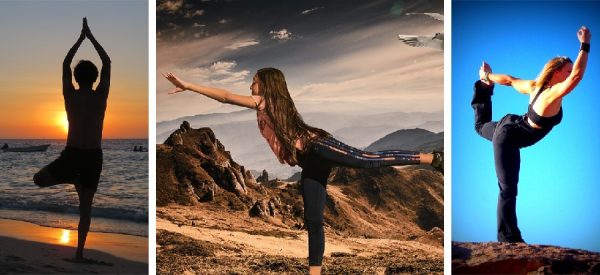
Practicing Balancing Yoga Poses Help as We Age
As we age, we tend to lose balance, cannot walk without support and might not be able to do many day to day stuffs on our own. Practicing balancing yoga poses daily has longer benefits. There are many yoga poses that need our concentration to align our body’s center of gravity with earth’s gravitational field. These poses need lot of practice to get into. Once we start getting the hang of balancing, it not only brings balance to just muscles and bones also to our emotions, nerve impulses and consciousness. The equilibrium we achieve by practicing the balancing pose helps us to age gracefully and keeps us in good health.
- Helps to build strength in muscle, joints, and all body parts
- Helps to bring harmony between body and mind. Which means as we age, the coordination between the two will be well maintained.
- Mind will be clear, and the physical obstacles of life can be handled much better and at ease. The coordination between mind and body improves.
- The fear of falling, losing balance will be less as we age when we keep practicing these yoga poses. These poses also help us to be confident and same time will remind us our capability to physical work.
How to learn balancing? The three factors that are important to learn balancing are:
- By learning how to get into the pose, how to handle shifting, how and when to get support (of a wall or a chair) when we are unstable. Learning how to handle instability of the body muscle and nervous system will help us to understand our capability and thus we learn to get into balance by creating equilibrium within.
- Focal point: Also known as Drishti in Sanskrit. While practicing balancing, it is important to keep focusing the eyes on the pose. Eyes helps us to keep stability with surroundings. Moving eyes will bring instability or alters our focal point. During practicing poses, we always feel instability and will learn to manage bringing back focus on stability and balancing.
- Breathing: Holding breath means struggle in yoga. Calm breathing only helps to let go of any doubts that we might have. An easy breathing will bring equilibrium between mind and body. This helps us to achieve balancing act easily.
Balancing can be practiced through simple beginners poses to advanced yoga poses.
- A shift between sukhasana or easy pose to tadasana
- Rolling from happy baby pose to get into chair pose
- Transition from low lunge to high lunge pose
- Changing standing pose/ tadasana to malasana/garland pose and reverse
- Transition from high lunge to tree pose
Other poses that help to achieve balance are:
- Natarajasana/Dancer pose: This is also known as dancer pose. Shift your weight on left leg. Hold sole of right foot with right hand while bringing the left hand up. Repeat this pose on other side too, both times hold the pose for 5 breaths.
- Warrior 3 or Virabhadrasana: From warrior one slowly shift weight on left leg. Bring right leg up behind and extend back so that rorso and lifted leg will be parallel to ground. Extend both hands forward or keep on hips. Repeat this other side, both time hold for 3 to 5 breaths. Let your focus on be something that does not move. If you feel not stable, practice pose next to wall.
- Half moon pose/Ardha chandrasana: From warrior 3 transfer to half moon pose. Slightly bend the right knee and bring right hand to floor. Extend the left leg back and left hand up. Slowly turn the torso on extended hand side and gaze up. Repeat other side. Hold the pose for 3 to 5 breath.
- High lunge revolved side angle pose: While in high lunge pose, bring palms of both hands together in namaste. Shift the torso slightly forward and place both elbows outside the bent knee and rotate torso towards the bent leg. Both your arms will be outside the knee. Hold the pose for 3 to 5 breath.
- Tree pose/vrikshasana: From warrior 3 or high lunge transition to tree pose. Bring sole of your one feet on the thigh of opposite leg. Place the other leg firmly on the floor. Extend both hands up in the air, change into Anjali mudra, and lift hands in namaste pose up above the head. Try to gaze up or close the eyes in this pose for 3 to 5 breath.
These poses will help avoid falling and are good for keeping harmony and balance between mind and body as we age.
Image credit: Image by jesslef from Pixabay (Free for commercial use)
Image by Andrés Levy from Pixabay (Free for commercial use)
Image by Wolfgang Eckert from Pixabay (Free for commercial use)
Author: Sumana Rao | Posted on: March 11, 2021
« Improve Balance and Coordination by practicing Half moon pose Divine & Disciplined: Yoga and Bharathanatyam »






















Write a comment